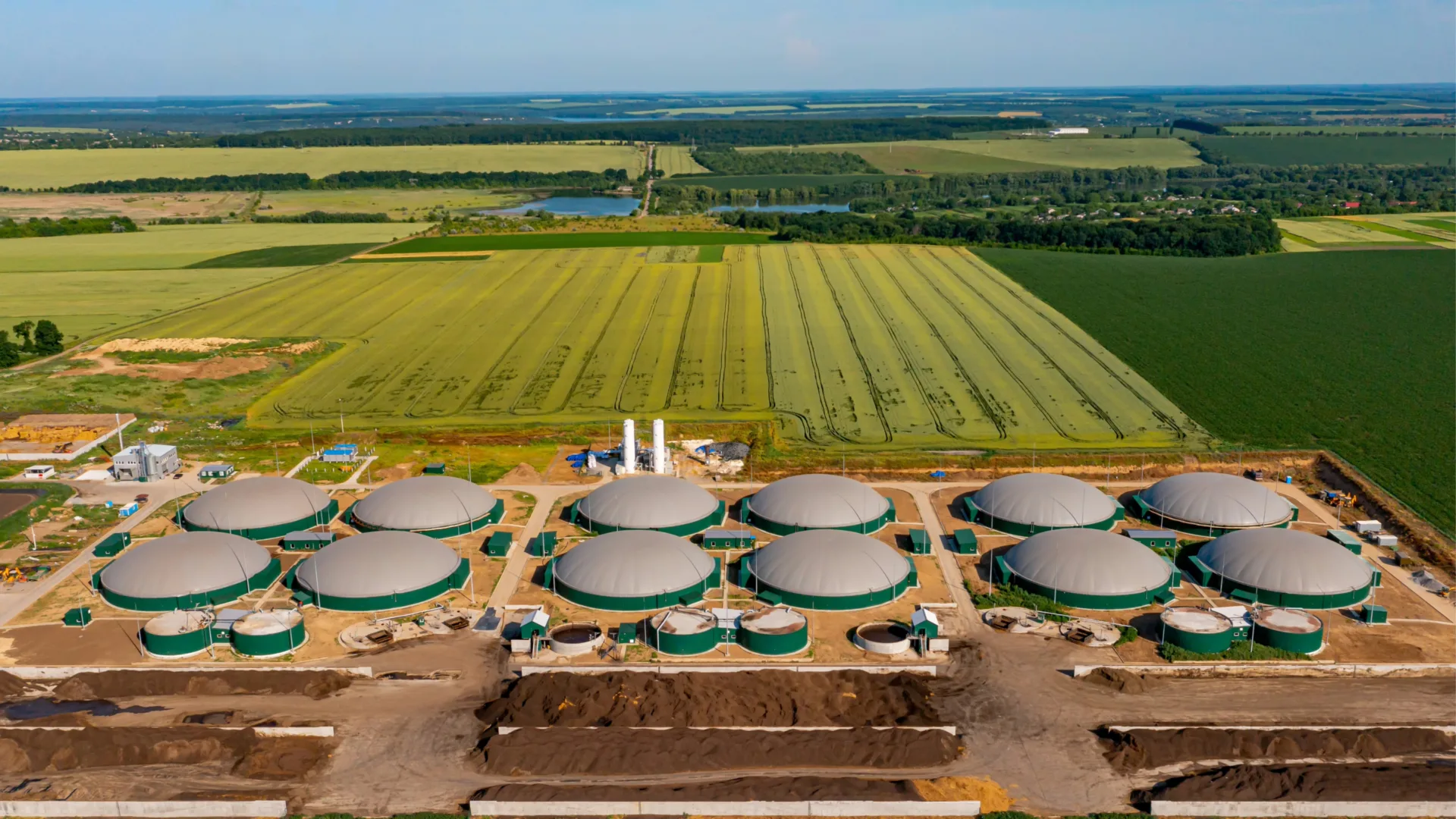Biogas production has established itself as a key technology for the production of renewable energy. The fermentation of organic materials produces biogas, which can be used as an energy source or fed into the gas grid.
The efficiency and cost-effectiveness of this process are crucial and depend heavily on monitoring the gas components. Gas analyzers play a central role in this by monitoring the quality and composition of the biogas at all stages of the process.
The biogas process: the importance of gas analysis
The biogas production process involves several crucial steps, from microbial fermentation to the use of the biogas as an energy source. Various gas components must be monitored throughout the process to ensure optimal conditions:
- Methane (CH₄): Main energy source and decisive for economic efficiency.
- Carbon dioxide (CO₂): Indicator for the fermentation process.
- Hydrogen sulphide (H₂S): Pollutant that causes corrosion and environmental problems.
- Oxygen (O₂): Disturbance of the anaerobic process if values are too high.
- Hydrogen (H₂) and nitrogen (N₂): Indicators for possible process problems.
Gas analyzers enable the precise recording of these components and provide the basis for well-founded decisions in the operation of biogas plants.
Advantages of a gas analyzer in detail
Process stability through real-time monitoring
Gas analyzers continuously measure the concentrations of gases and enable an immediate response to changes. This is particularly important to prevent faults in anaerobic degradation.
Example: If the methane content suddenly drops, this could indicate inadequate fermentation conditions. An early analysis helps to identify the cause and rectify it quickly.
Maximizing the methane yield
The economic success of a biogas plant depends largely on the methane yield. Gas analyzers help to continuously optimize the fermentation process, find the ideal composition of the substrates and adjust the retention times in the fermenter.
Through precise control, the methane yield can be increased and the energy yield maximized.
Reduction of pollutants
Gas analyzers measure pollutants such as hydrogen sulphide (H₂S) and ammonia (NH₃), which can be contained in biogas. High H₂S values can lead to corrosion of pipelines, tanks and engines, increased maintenance costs and environmental problems with exhaust gas purification.
By using a gas analyzer, operators can take measures to reduce pollutants in good time.
Cost optimization through more efficient system operation
Gas analyzers help to reduce operating costs by optimizing substrate consumption, extending the service life of system components and minimizing energy losses.
Example: A precise methane measurement prevents energy losses in combined heat and power plants (CHPs) due to insufficient gas quality.
Legal regulations and safety requirements
Gas analyzers are essential to comply with strict legal regulations, especially with regard to: Emission limits for pollutants such as sulphur oxides (SOₓ) and nitrogen oxides (NOₓ), minimum gas purity requirements for feeding into the natural gas grid and safety standards to prevent explosion hazards.
Precise gas analysis helps to minimize legal risks.
Benefits in the subsequent process steps
Gas analyzers also play a decisive role in the subsequent process steps:
Biogas upgrading
Biogas must be processed before it can be fed into the gas grid or used as a fuel. Gas analyzers measure methane content to ensure feed-in quality, oxygen content to avoid explosion risks and CO₂ content to optimize CO₂ separation.
Use in combined heat and power plants
Biogas is used to generate electricity and heat in combined heat and power (CHP) plants. The quality of the biogas influences the efficiency of the engine and the wear and maintenance intervals.
A gas analyzer ensures constant gas quality and protects the engines from damage caused by harmful gases.
Emission control
Biogas plants must comply with environmental regulations for emissions. Gas analyzers measure the concentrations of pollutants in the exhaust gas (e.g. CO, NOₓ, SO₂) and methane slipwhich is monitored to reduce climate damage.
Precise emission control not only protects the environment, but also avoids legal consequences.
Economic and ecological advantages
Increasing economic efficiency
Gas analyzers help to increase economic efficiency by optimizing energy yields, reducing operating costs through less maintenance and maximizing system efficiency.
Environmental protection and sustainability
Gas analyzers also offer numerous advantages from an ecological point of view, as they help reduce greenhouse gas emissions, conserve resources through the efficient use of substrates and minimize pollutants that harm the environment.
Gas analyzers as the key to process optimization
Gas analyzers are indispensable tools for optimizing biogas production. They enable precise control and stabilization of the fermentation process, economical use of resources and protection of the environment and plant infrastructure.
The use of these technologies not only contributes to economic efficiency, but also to sustainability and compliance with legal regulations. In a world that is increasingly reliant on renewable energy, the use of gas analyzers is a crucial step towards ensuring competitiveness and protecting the environment.


